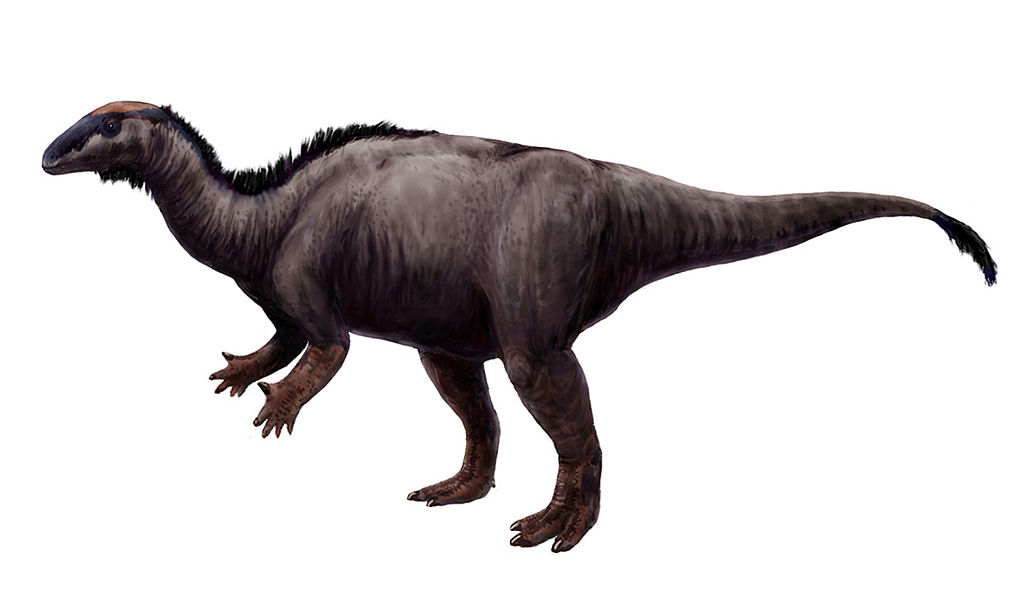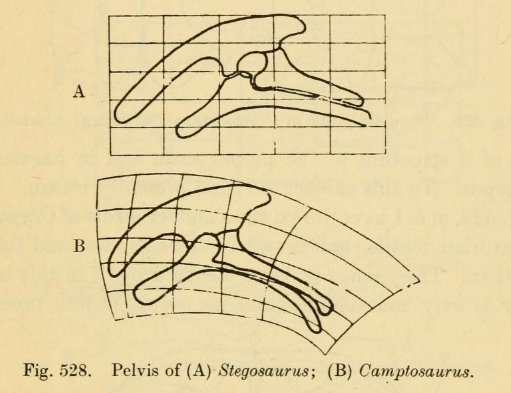An investigation of some of D'Arcy Thompson's correspondence
Heather Dickinson and Barbora Cernokova
Overview
What is most interesting is D'Arcy and Heilmann's use of the transformation method to predict intermediate steps in evolution and the forms of extinct species. Here form means the physical structure, shape or size of an organism. For example, in D'Arcy's famous book On Growth and Form he uses his method to predict what the pelvis bone of a dinosaur (Camptosaurus), may have looked like. It becomes clear that D'Arcy was not working alone, indeed he had a strong web of connections all across the world with whom he shared ideas. In this way On Growth and Form is very much a collaboration of many great scientists and artists.

Camptosaurus

Pelvis of (A) Stegosaurus; (B) Camptosaurus.
Original diagrams from On Growth and Form
Correspondence
During his lifetime, D'Arcy Thompson fomed a huge correspondence network. Gerhard Heilmann and Robert W. Shufeldt, like many others, were fortunate enough to be part of his squad.
Despite common misconceptions, this series of correspondence undoubtedly illustrates that D'Arcy was not working in seclusion from other scientists. He was in fact sharing ideas and pieces of work with very like-minded people.
In particular, it becomes clear the great respect that Gerhard Heilmann and D'Arcy held for one another. Unfortunately the two men received very different receptions. Heilmann struggled to gain both respect and funding from his peers in Denmark. He was forced to spend all his own money just to get his work printed. His work was deemed unoriginal and not of value, despite the importance D'Arcy and other British and American scientists had seen within it. This is in stark contrast to D'Arcy who was greatly admired within the scientific community of his country all the more because of his wide knowledge and expertise. Heilmann however appeared to be shunned by scientists in Denmark because of his career as an artist. It is unfortunate that these two men whose stories had been so intertwined and whose work had become somewhat of a collaboration received such different opinions from their peers.